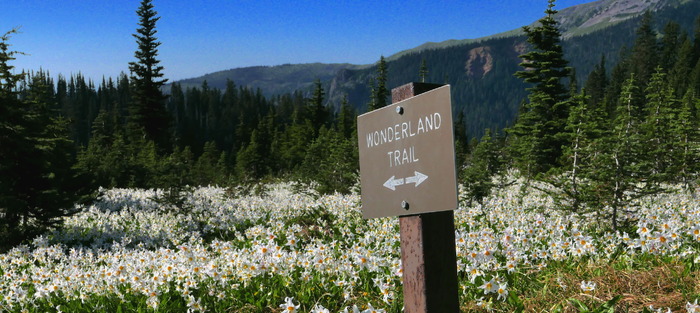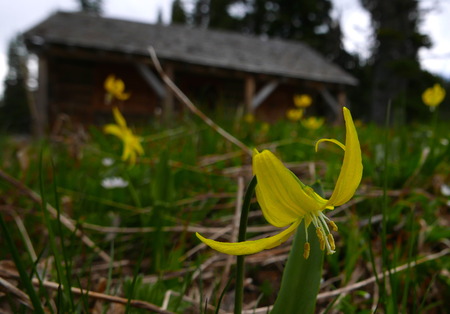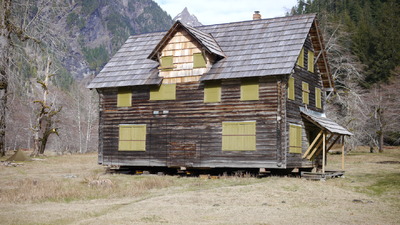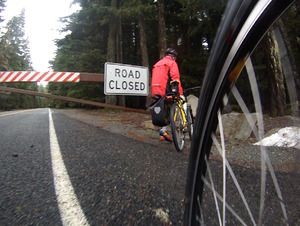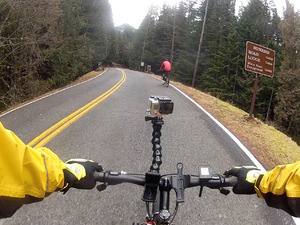Volcanoes dominate some skylines in the Pacific Northwest. Just witness how many photos are published of the Seattle area with Mt. Rainier in the background. We climb them, ski them, and hike around them. Which brings me to Mt. St. Helens, the show stopper of 1980 when the summit collapsed and produced the Earth's largest recorded landslide in an eruption that displaced 3.7 billion cubic yards of material from the mountain. Lahars, mud flows, ash deposits and blown over denuded trees made the landscape surreal. Now, 35 years later, my daughter and I decided to hike the Loowit Trail which circumnavigates the mountain and takes the hiker through the impact area in a transit that sees the lingering effects and amazing recovery of the ecosystems.We took two days to make the 32 mile trip, sleeping in on the first day and driving the 3.5 hour trip to our hop on point at Climber's Bivouac on the south side of the mountain. A 2 mile trail took us to the intersection with the Loowit Trail for us to start our Counter Clockwise transit. Sticking to our plan, we hiked approximately 12 miles the first day and bivied on the Plains of Abraham, an area just before entering the restricted zone, where camping is not allowed. (Full set of photos here)
How does one adequately describe this hike in a few paragraphs? The south side sees trail crossing boulder fields with adequately spaced wooden posts placed to guide the hiker as there is no real trail in these sections. Gradually we entered the impact zone where trees were mown over like toothpicks, all pointing away from the blast direction, but some half covered in deposits, some still standing, and some being surrounded by meadow and flowers and new trees. The impact zone itself can be characterized by ravines, gullies and an occasional chasm. The deposit of this vast amount of ejected material is easily cut by creeks and rivers, with near vertical walls to contend with. At the South Fork Toutle River crossing, there are ropes to assist the hiker in ascending and descending into the ravine because of the loose and steep material one must try to find purchase on. And don't expect any bridges either, making for a few feet wet crossings. Did I mention the heat? Miles of hiking with no shade and the sun heating up the lava rocks all around you. Better carry enough water too, as sources are scarce. But I don't mean to complain about the various challenges on this hike, as the geologic interest, vastness of the area, expansive views and hidden surprises (like our visit from a Northern Pygmy Owl during a rest break back in old growth) more than compensate for the conditions. Prepare for a little grit in your socks and be amazed at the power of nature, both in its destructive capabilities and in its amazing ability to recover and rebuild.
 Battlement Ridge/Mt. Adams east sideThis copped title is from Mike Woodmansee's book, "Trekking Washington." Mt. Adams "round the mountain" trail doesn't go round the mountain. There is a rugged no-man's land on the east side, seeing few visitors with approximately 5 miles of terrain extending from the viewpoint overlooking Hellroaring Meadow to a minimal trail on the far side of Avalanche Valley. On this 2 day trip (full photo set here), day one started from the Cold Springs campground (where I truck camped the night before) and proceeded CCW on good trail through the lovely Bird Creek Meadows area, ending on an overlook at 6500 feet. It took me nearly 8 hours to negotiate this approximately 5 mile section, starting with a sketchy descent into Hellroaring Meadow, a strenuous climb on the other side to the left of Little Mt Adams, then on to the Ridge of Wonders.
Battlement Ridge/Mt. Adams east sideThis copped title is from Mike Woodmansee's book, "Trekking Washington." Mt. Adams "round the mountain" trail doesn't go round the mountain. There is a rugged no-man's land on the east side, seeing few visitors with approximately 5 miles of terrain extending from the viewpoint overlooking Hellroaring Meadow to a minimal trail on the far side of Avalanche Valley. On this 2 day trip (full photo set here), day one started from the Cold Springs campground (where I truck camped the night before) and proceeded CCW on good trail through the lovely Bird Creek Meadows area, ending on an overlook at 6500 feet. It took me nearly 8 hours to negotiate this approximately 5 mile section, starting with a sketchy descent into Hellroaring Meadow, a strenuous climb on the other side to the left of Little Mt Adams, then on to the Ridge of Wonders.